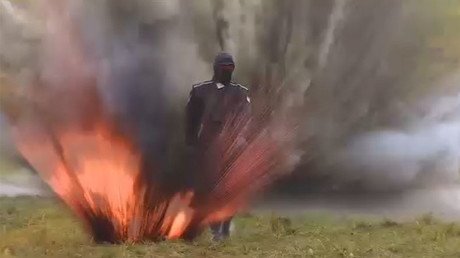‘We still get replaced by a man’: Afghan women on failed US gender equality program

The ambitious, $216 million US program for female empowerment has failed Afghan women, a new report said. Speaking to RT, women in the crisis-stricken country said that they hadn’t seen any changes.
Announced in 2013, the Promoting Gender Equity in National Priority Programs were aimed at improving the status of more than 75,000 young Afghan women, at the cost of around $216 million.
Five years into the program, a report from Special Inspector General for Afghanistan Reconstruction (SIGAR) says that USAID has failed to make much headway on just about any of its objectives, despite $89.7 million spent as of April 2018.
NEW REPORT: USAID’s Promote launched in 2014 to improvestatus of more than 75,000 women in #Afghanistan; agency hasn’t demonstrated whether program has made progress toward goal https://t.co/ppTk41xiKm
— SIGAR (@SIGARHQ) September 13, 2018
Many lives would have been changed for the better had the US spent the money properly, Nazia, head of a sewing center in Nangarhar Province, told RT.
But we don’t know how they spent it or who they gave it to.
Jamila, the head of a student training center in Nangarhar, openly admits the US program hasn’t “done much for Afghan women.” She brought up the example of an exhibition held in India where a man was representing Afghan women.
This program in Afghanistan is for women and we still get replaced by a man. Why?! Don't we have the capacity?
She requested USAID support, asking the agency for carpet-weaving machinery to modernize the handicrafts production. Jamila said:
Their response was negative. They said they were here to train us. I have 10 years’ experience, I don't need the training, I need the machinery!
.
Nazia explained that she repeatedly sent in forms for aid under the program. “They told us that they would let us know, but there was no response. Even when we called them, they never called back,” she said.
Only one component of the program is actually on track, SIGAR found. Known as Musharikat, it aims to “build a coalition of more than 5,000 national, provincial, and local activists and civil society organizations to advocate for women’s equality and empowerment.”
SIGAR experts “can’t find any good data that they’re helping any women,” the watchdog’s head John Sopko admitted to the New York Times. “This is a classic example of hubris and mendacity.”
Since the start of the program, USAID Afghanistan has moved the goalposts - in SIGAR terms, “made extensive changes to the four components’ performance indicators designed to measure progress” - making any objective assessment difficult at best.
From the 78 original performance indicators, USAID in Afghanistan has “modified 32, deleted 23, and added 13” new ones. Definitions and targets were also altered: in one example, the target for number of participants getting better jobs was changed from 12,500 to just over 1,800, a reduction of 85 percent, SIGAR found.
SIGAR’s reports have repeatedly questioned US strategy in rebuilding war-torn Afghanistan. In August, the authority revealed explosive findings about US counter-narcotics policy in Afghanistan, which not only failed to reduce the notorious opium production, but also contributed to increased poppy cultivation, due to Washington’s funding of irrigation projects.
Another SIGAR report from 2016 said that that the Pentagon squandered $6 million airlifting nine rare male goats from Italy into Afghanistan, in a project aimed to "bolster the cashmere industry” in the country.
SIGAR is not the only US body that highlight the inconsistencies in Washington’s dealing with the war-ravaged country. The Pentagon’s own inspector general has revealed that Washington ‘lost’ $9.7 million worth of assets in Afghanistan since 2012, blaming the military’s negligence.
Despite the 17-year US-led campaign in the South Asian country, Taliban militants still maintain a significant presence in Afghanistan. Around 104,000 people, including 31,000 civilians, have been killed in the war between 2001 and mid-2016, according to data from the Costs of War Project.
Subscribe to RT newsletter to get stories the mainstream media won’t tell you.














